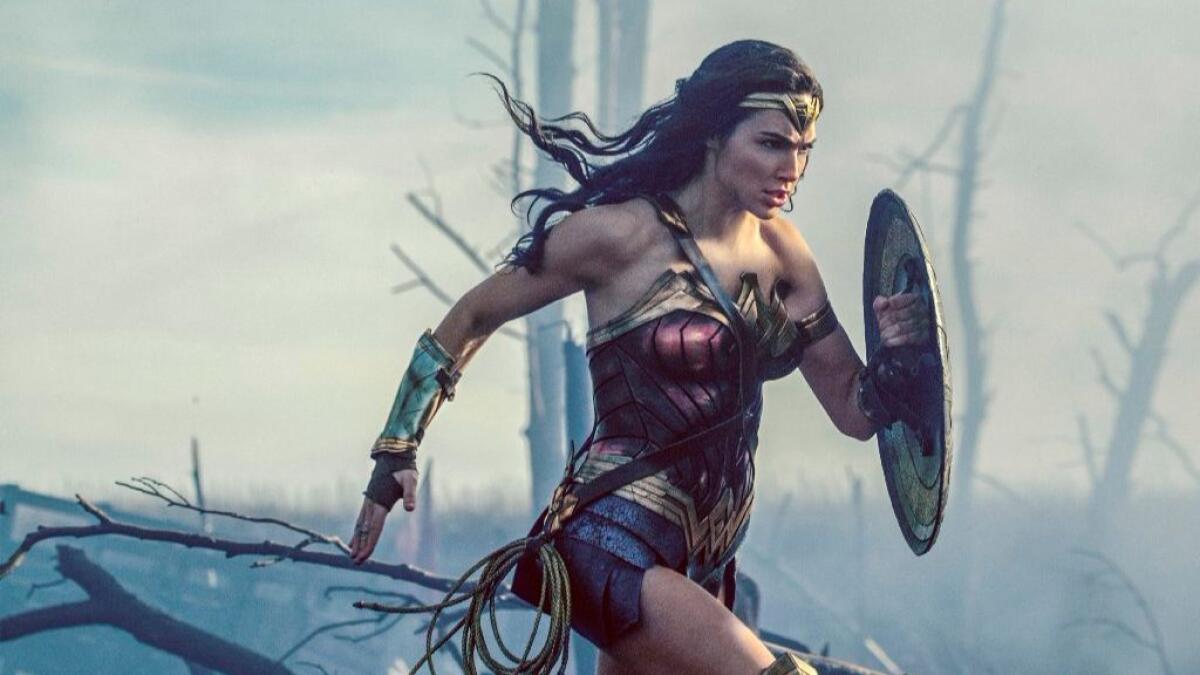‘Wonder Woman’ is the exception as Hollywood continues to cast men in major roles, report says

- Share via
Galvanized by Ashley Judd, Rose McGowan and others in the #MeToo movement, women seized the narrative in Hollywood in 2017. But on screen, it was a different picture.
Women claimed just 24% of leading roles, or protagonists, in the top 100 films last year, down from 29% in 2016, according to a new report from San Diego State’s Center for the Study of Women in Television and Film.
Audiences in 2017, the report found, were almost twice as likely to see male characters on screen as female characters.
For example, women made up 37% of major characters — a broader category that includes actors who were not central protagonists — in those top-grossing films in the U.S. and Canada. That percentage did not budge from 2016, according to the report, titled “It’s a Man’s (Celluloid) World” and released Thursday.
Major characters were defined as those that appeared in more than one scene and were important to the film’s plot. Male characters accounted for nearly two-thirds of the major roles — a disparity that probably will be noted next month during the 90th Academy Awards.
The study, which was produced by professor Martha Lauzen, covered 2,361 characters portrayed in the top-100 grossing films domestically. It highlighted how Walt Disney/Lucasfilm’s “Star Wars: The Last Jedi,” Disney’s “Beauty and the Beast” and Warner Bros.’ “Wonder Woman” — which combined produced more than $1.5 billion in domestic ticket sales — were the exceptions.
“Despite the visibility of female leads in the top three grossing films of 2017, the overall percentage of female protagonists declined,” Lauzen said in a statement. “The numbers do not yet reflect claims of a tectonic or massive shift in the film industry.”
For example, only 32% of the films boasted 10 or more female characters with speaking roles, compared with 79% of films that featured 10 or more male characters with speaking parts.
Men also were more likely portrayed in work settings than women — and as leaders.
The dismal statistics were not surprising. For more than a decade, Lauzen has painstakingly documented Hollywood’s gender imbalance in a series of studies. She’s not alone. USC professor Stacy Smith, founder of the Annenberg Inclusion Initiative, separately has assembled statistics that reveal a lack of women in such key behind-the-scenes roles as directors, producers, cinematographers and music composers.
Statistical improvements may not be evident for years because it typically takes two or more years for a film to get made.
Modest progress, however, was made among women of color. Among characters with speaking roles, the percentage of black females increased to 16% in 2017 from 14% in the year before. Latinas in the top-grossing films more than doubled to 7%, up from 3%. And the percentage of Asian females increased to 7%, up from 6%. Still, about 70% of all speaking roles went to white female and male actors.
More to Read
Inside the business of entertainment
The Wide Shot brings you news, analysis and insights on everything from streaming wars to production — and what it all means for the future.
You may occasionally receive promotional content from the Los Angeles Times.











